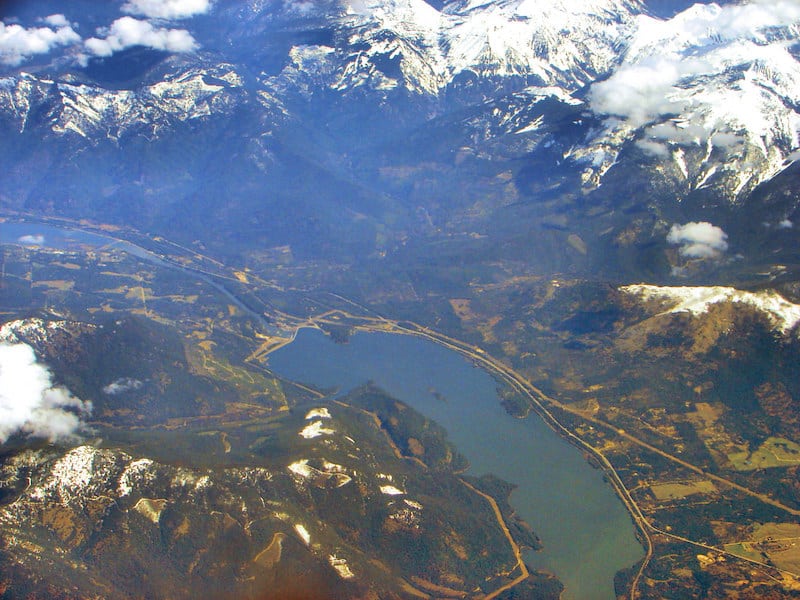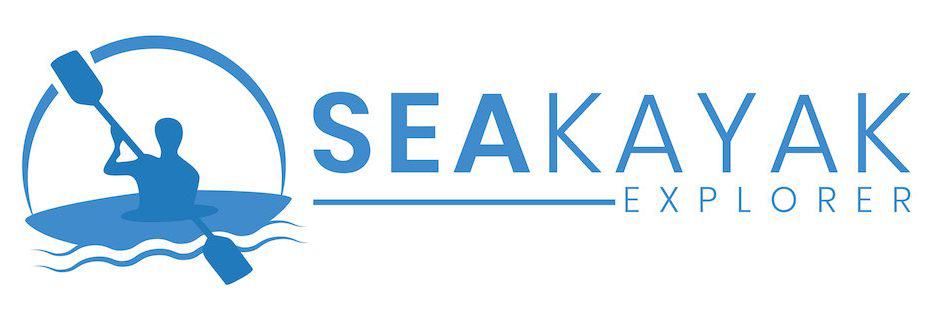Montana is home to some of the most rugged mountain terrain in the United States, and surprisingly, home to some fantastic kayaking trips. Whether you want to wildlife watch as you float down the original “lazy river,” cross a crystal-clear flatwater alpine lake, or try your hand at some Class 4 whitewater rapids, Montana has a little bit of everything.
1. Glacier National Park Lakes, MT
Glacier is one of the US park system’s gems. The alpine terrain and glacier-fed streams and lakes make the most picturesque backdrop you could ask for.
Several of Glacier’s largest lakes are easy to access from the park campgrounds border them. You can bring in your own kayak, or you can rent from the outfitter onsite. If you bring in your own boat, you’ll have to have it inspected for invasive aquatic species at the ranger station.
The most popular lakes, and the easiest to access, include Two Medicine Lake, Swiftcurrent Lake, Saint Mary Lake, and Lake McDonald. All of these are pretty large, and as the day progresses and winds build up, you can expect quite a chop. Head out early in the morning for the best calm water.
Rules regarding opening dates for the lakes vary from year to year, so be sure to check the park website for the latest information.
2. The (Mighty Mo) Missouri River

The Missouri River’s headwaters lie in central Montana at Three Forks. The river then works its way east. Lewis and Clark traveled on the Mighty Mo and camped on its shores, and now you can too. The most popular way to see the river is with long floats.
The upper river has many dams and reservoirs, making longer trips difficult. But after the dams at Great Falls, the river travels for 200 miles before it enters Fort Peck Lake. There are infinite options for multi-day trips or afternoon outings.
After Fort Benton, the river flows through Missouri Breaks National Monument. This is one of the best places to experience the river and see why it is designated as a National Wild and Scenic River. This area is mostly unchanged since it was seen by Meriwether Lewis and William Clark 200 years ago.
Fort Peck Lake is big water, best suited for sea kayaks. After the lake, there are no interruptions in the river until the North Dakota border and its confluence with the Yellowstone River. It has no rapids, and it’s quiet and scenic.
High winds are a frequent factor on all sections of the Missouri, making many types of kayaking difficult at times. The numerous dams that require portaging will need to be carefully researched, especially if you’re taking a long outing. Many cannot be portaged without a car.
3. Crystal Lake, Lewistown, MT

In central Montana’s Big Snowy Mountains, you’ll find Crystal Lake. The US Forest Service operates a campground here, and that’s where you’ll find the non-motorized boat launch. Crystal Lake is 46 acres big and surrounded by hiking and biking trails.
Located at an elevation of 5,700 feet, Crystal Lake sits under Mount Harlow in one of the most beautiful settings Montana has to offer. The area is popular with birdwatchers, horseback riders, and fishermen.
If you want to stretch your legs after your paddle, don’t miss the loop hiking trail that circles the lake.
4. Yellowstone River, MT

When Lewis and Clark passed through Montana, the party divided. Lewis explored the upper reaches of the Missouri, while Clark explored the Yellowstone. Much like the Mighty Mo, the upper portion of the Yellowstone River travels from the national park eastward towards Billings, a distance of about 175 miles.
The terrain through which the Yellowstone passes hasn’t changed since Clark and his team first saw it. At Pompey’s Pillar outside of Billings, you can see Clark’s signature in the stone. Wildlife is plentiful, and the fishing is superb along the entire river.
Multi-day float and camp trips are popular on the Yellowstone. Along its course, there are many diversion dams, tricky currents, and logjams. The paddling isn’t extreme, but it does require keeping your head up. The river is mostly mellow below Yankee Jim Canyon.
If you’re looking for whitewater thrills, Yankee Jim Canyon has some of the best whitewater in Montana. There are four miles of Class 2 and 3 rapids, but at peak seasonal flows, some spots are dangerous Class 4s.
5. Noxon Reservoir, MT

If you’re looking for a quiet spot away from the crowds, check out Noxon Reservoir at the town of Trout Creek. The scenery is gorgeous, and it’s out of the way enough that not many folks venture out here. Some call it the best-kept secret in Montana.
The lake has lots of put-ins, so even those paddlers who are out will seldom cross paths. The water is clear enough to see fish swimming under your kayak. The surrounding area has excellent hiking and hunting, and trout streams feed the reservoir. Don’t forget your fishing rod!
6. Flathead Lake and Wild Horse Island, MT

Located just south of Glacier National Park on the Flathead River, Flathead Lake has numerous kayaking opportunities. Many paddlers enjoy trekking out to Wild Horse Island, where you can take a two-and-a-half-hour hike. The best place to put in to see the island is from Big Arm Bay.
Flathead Lake is the largest natural freshwater lake in the western United States. It’s 28 miles long and 15 miles wide–this is big water. At Flathead Lake State Park, you’ll find abundant wildlife, fishing, swimming, camping, and picnicking opportunities to keep you busy for quite a while.
7. Kootenai River, MT

The Kootenai begins in British Columbia. Below Libby Dam, it flows 50 miles through Montana before coming to the Idaho border. It’s surrounded by rugged, mountainous terrain and thick forests.
The dam regulates the flow of the river, but it varies considerably and suddenly. Always check local conditions before setting out. The first 25 miles of river below the dam have a swift current but no rapids. China Rapids is the first obstacle to the casual float trip. A 30-foot waterfall follows, and then a gorge with numerous whitewater options. The gorge contains at least three or four areas of Class 4 rapids and two to four Class 3 rapids.
After the final gorge, the Kootenai only has small riffles to Idaho. Its relatively low elevation means that it can heat up quickly on hot summer days, so be ready to feel like you’re not in Montana anymore!
Except for the Class 3 China Rapids section and the gorge, the Kootenai River is excellent for floats. Look for the best trips when flows range from 8,000 to 12,000 CFS. If you portage past the falls and gorge, the river is suitable for any skill level.
8. Smith River, MT
The Smith River is a spot so popular that a lottery and permit system has been implemented. The system allows about 135 people to put in every day during the peak times of the summer season. While it might seem like an extra hassle, the river trip is that good–it is well worth the extra effort. Smith River is on many paddler’s bucket lists.
Smith River flows for 59 miles through spectacular mountain scenery. The put-in is located at Camp Baker, and the route ends at Eden Bridge. The trip lasts four days, and camping locations are assigned by the rangers. Luckily, there’s plenty of room to spread out, and the lottery system ensures and quiet and tranquil experience for everyone.
The Smith River is renowned for its rainbow and brown trout fishing and wildlife opportunities. You’re sure to see bears and lots of other big animals. The Smith is unique because it’s a big river with big scenery, but there are only two small sections with nothing more than Class 2 rapids. This is Montana river floating at its best!
9. Clearwater Canoe Trail and Seeley Lake

If you’re looking for a beautiful trip that the whole family can accomplish in one afternoon, check out the Clearwater Canoe Trail. It’s a leisurely float through Lolo National Forest.
The put-in is at Seeley Lake, and if you choose to take the trail, you’ll travel only 3.5 miles. That makes it an excellent trip for a few hours, and it’s easy enough to hike back to get your car, which is only 1.5 miles away via land.
10. Clark Fork River, MT

Another relaxed option that fun for the entire clan is the Clark Fork River. This mountain-rimmed and relaxing river winds through the Anacona Pintler Mountains, where you’ll see big wildlife like moose, elk, and deer.
The Clarks Fork starts near Missoula, where it forms with the Bitterroot and Blackfoot Rivers. It passes through the impressive Alberton Gorge.
Summing Up Kayaking in Montana
Montana has an incredible mix of alpine lakes and rivers of every skill level. The scenery and wildlife viewing opportunities are second to none. Don’t miss a summer paddle in one of the most wild and beautiful states in the nation!

